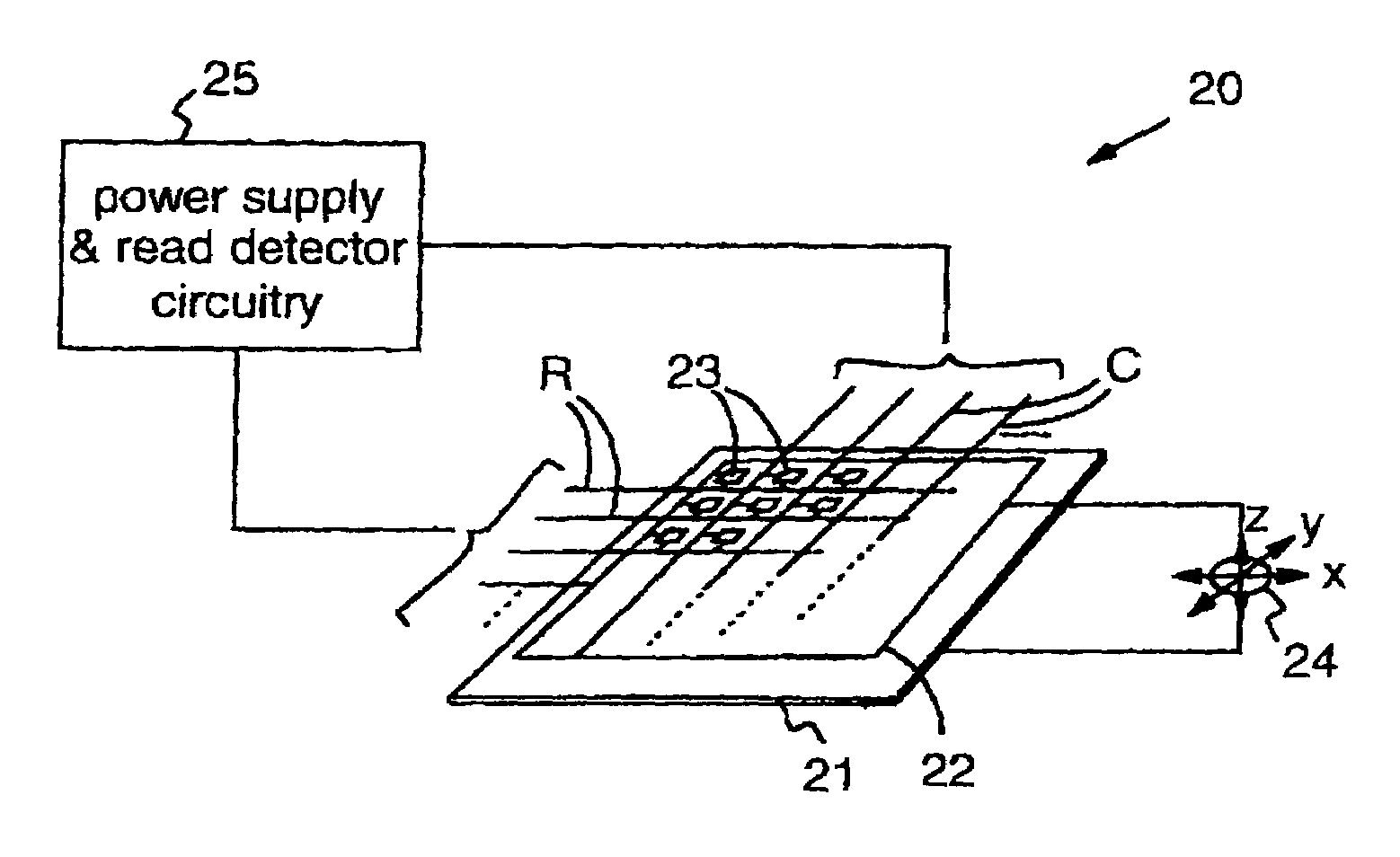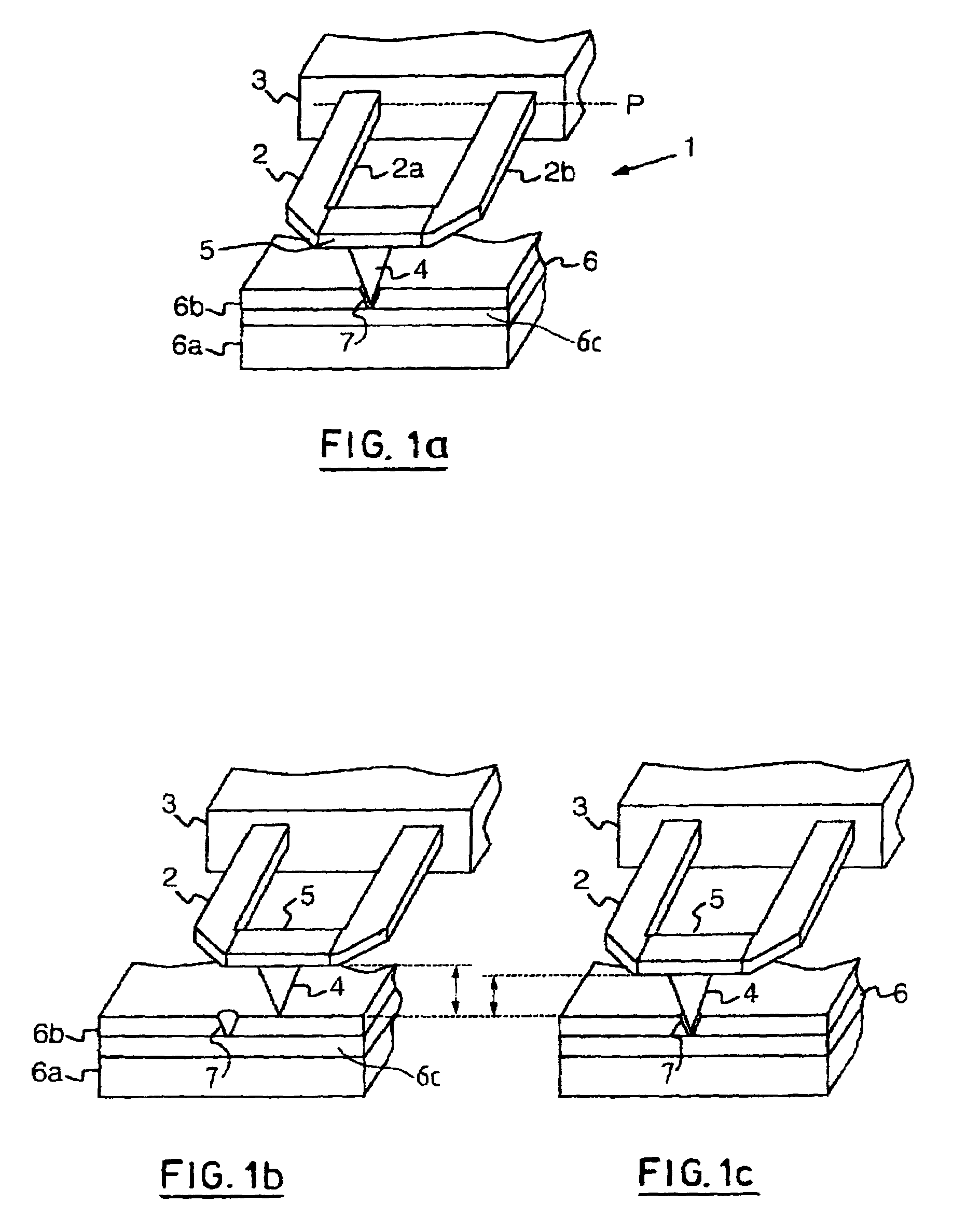High density data storage medium
a data storage medium and high density technology, applied in the field of probes, can solve the problems of difficult to find a material with these properties, difficult to soften enough hard polymers with a high melting point, local softening of polymers, etc., and achieve the effect of reducing the overall dimension of indentation, reducing the size of indentation, and reducing the viscosity
- Summary
- Abstract
- Description
- Claims
- Application Information
AI Technical Summary
Benefits of technology
Problems solved by technology
Method used
Image
Examples
example 4
Formulation of Prepolymer (B-Staging Via In-Situ Protection)
[0081]1,1-(Methylenedi-4,1-phenylene)bismaleimide (6.65 g, 18.6 mmol) was dissolved in NMP (20 ml), tris(furfuryloxy)cyclohexylsilane, 1 (5.00 g, 12.4 mmol) and furan (1.68 g, 24.8 mmol) were then added and the reaction mixture stirred at room temperature for 48 hours. Excess furan (8.41 g, 124 mmol) was then added followed by stirring at room temperature for 24 hours to protect all of the remaining maleimide groups. The reaction mixture was then precipitated (2×) into hexane (500 ml) to give the B-staged Diels Alder polymer, 4, (11.5 g, 86%). The molecular weight, viscosity and spinning characteristics of the B-staged polymer could be controlled by the ratio of bis(maleimide):tris(furan):furan in the original reaction mixture. 1H-NMR (400 MHz, CDCl3) d: 7.54-6.30 (m, ArH and alkene CH), 4.60-3.00 (br m, CH2 and CH), and 1.05-2.20 (m, CH2).
example 5
Formulation of Prepolymer (B-Staging Via Protected Monomers), 5
[0082]A mixture of the bis(furan) protected bismaleiimide, 2, (9.34 g, 18.6 mmol) and the tris(furfuryloxy)cyclohexylsilane, 1 (5.00 g, 12.4 mmol) were dissolved in NMP (20 ml) and heated at 80 C for 12 hours. An excess of furan (8.41 g, 124 mmol) was then added followed by stirring at room temperature for 24 hours to protect all of the remaining deprotected maleimide groups. The reaction mixture was then precipitated (2×) into hexane (500 ml) to give the B-staged Diels Alder polymer, 5, (12.1 g, 90.5%). The molecular weight, viscosity and spinning characteristics of the B-staged polymer prepared by this alternate method could be controlled by the ratio of bis(maleimide):tris(furan):furan in the original reaction mixture, the reaction temperature and reaction time. 1H-NMR (400 MHz, CDCl3) d: 7.54-6.30 (m, ArH and alkene CH), 4.60-3.00 (br m, CH2 and CH), and 1.05-2.20 (m, CH2).
example 6
Fabrication of Thin Crosslinked Films
[0083]The B-staged polymer, 4, (1.0 g) was dissolved in dry NMP (9.0 g) (10.0 wt % solution) and this solution was then filtered through a 0.1 mm filter and spun coated onto silicon wafers at 2500 rpm. The wafers were then heated at 120 C for 5 hours to cause full deprotection of the maleiimide groups with associated loss of the furan protecting group and crosslinking. The resulting thin films, the thickness of which could be controlled by spin speed and initial wt %, were shown to be fully crosslinked and defect free, suitable for data storage using scanned probe techniques.
[0084]While the invention has been described with respect to certain preferred embodiments and exemplifications, it is not intended to limit the scope of the invention thereby, but solely by the claims appended hereto.
[0085]
PUM
| Property | Measurement | Unit |
|---|---|---|
| thick | aaaaa | aaaaa |
| thickness | aaaaa | aaaaa |
| temperatures | aaaaa | aaaaa |
Abstract
Description
Claims
Application Information
 Login to View More
Login to View More - R&D
- Intellectual Property
- Life Sciences
- Materials
- Tech Scout
- Unparalleled Data Quality
- Higher Quality Content
- 60% Fewer Hallucinations
Browse by: Latest US Patents, China's latest patents, Technical Efficacy Thesaurus, Application Domain, Technology Topic, Popular Technical Reports.
© 2025 PatSnap. All rights reserved.Legal|Privacy policy|Modern Slavery Act Transparency Statement|Sitemap|About US| Contact US: help@patsnap.com



